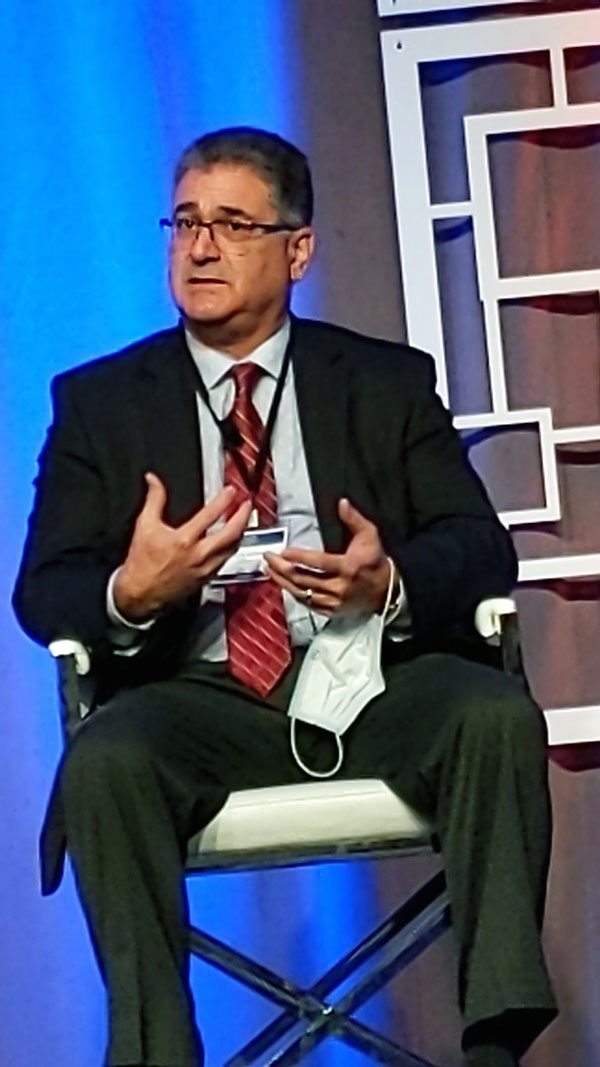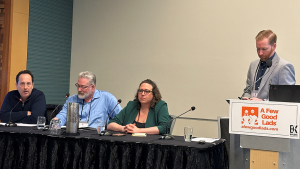Ontario’s construction sector is moving on from COVID crisis mode and that means it’s time to take stock of multiple new challenges while revisiting prickly older problems that haven’t gone away.
That was the dominant theme of a panel discussion presented in Mississauga recently by the Ontario Construction Secretariat, titled Delivering Construction in Disruptive Times.
Health and safety, market share, balky supply chains, problematic contracts and mental illness in the sector were cited as issues requiring focus but job one for the sector is ensuring there is a competent skilled trades workforce to deliver the projects in Ontario’s pipeline the rest of this decade, suggested the panellists.

“It’s forced us as a contractor to really step back and learn what happened, really the last two years,” said Mark Arnone, vice-president of Canadian operations with Aecon Nuclear.
Fellow panellist Marc Arsenault, business manager of the Provincial Building and Construction Trades Council of Ontario, noted the province will require 50,600 new trade workers by 2027 to undertake $140 billion of work in the ICI pipeline. The sector requires more sophisticated planning to meet those needs, he said.
“I think that we can be more precise with that,” said Arsenault. “What we’ve seen in terms of best practices is that it can be done on a 12-month look ahead, which would be extremely helpful for recruiting efforts.”
Better labour market modelling would allow owners, contractors and unions working collaboratively to identify workforce pinch points and plan to deal with them, Arsenault said. While $60 million in transit projects are ramping up, he said, multibillion-dollar nuclear rehabilitation projects will be moving into new phases.
“The labour demand forecast modelling will allow for projects that are winding down,” he said. “OK, here’s where our peaks are on these projects, there is going to be winding down in those times. It’s not that we’re ramping up 50,000 folks, it’s a blend between folks that are winding down on these projects coming available and they can be coming over here.”
Arsenault also argued it’s imperative that contracts for major projects with public owners such as Infrastructure Ontario and Ontario Power Generation contain more targeted language to ensure the promotion of apprentices, with long-term retention and overall workforce development in mind.
“They are the onsite learning environment for our apprentices and these projects pump out the next generation of skilled workers,” he said of the public projects. “There needs to be a look at the procurement language to hold these projects to a higher standard and have these investment dollars do double and triple duty by maximizing the return on the investment and ensuring the use of approved training programs, with registered apprentices and have demonstrated health and safety track records.”

The third panellist, Graeme Aitken, executive director of the Electrical Contractors Association of Ontario, also stressed the need for contractors to renew their focus on better contracts as a way to bolster the unionized sector and market share. The strengths of unionized electricians – that they are well-trained, certified and work safely – need to be constantly reinforced to differentiate them from non-union workers.
“We need to communicate with owners and we need to explain that unless you want potentially shoddy work, work not up to standards, you’re going have to put these types of things in contracts.” he said, referring to 309A licences and other certification.
Later in the session during a Q and A, Council of Ontario Construction Associations president Ian Cunningham rose with what he said was a “provocative” point.
“What can we do to change the culture of our industry?” he asked, when in any given year between 14 and 24 people die on the job, 300 people are critically injured, and the incidence of opioid deaths, suicides and mental illness is well above the provincial average.
Those are all issues that need addressing with renewed focus, Arnone said.
“I think the safety culture has come a long way clearly and I agree with you 100 per cent it has not come nearly far enough,” said Arnone. “We need to permeate that safety culture into the discussion on everything that we do.”
Follow the author on Twitter @DonWall_DCN.











Recent Comments
comments for this post are closed